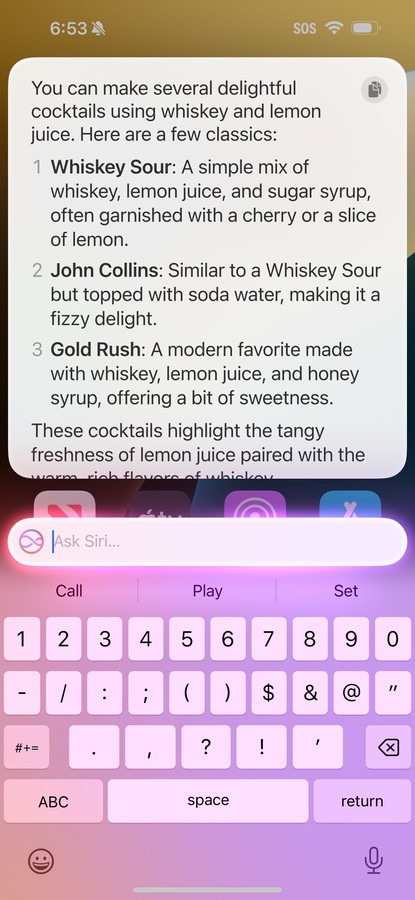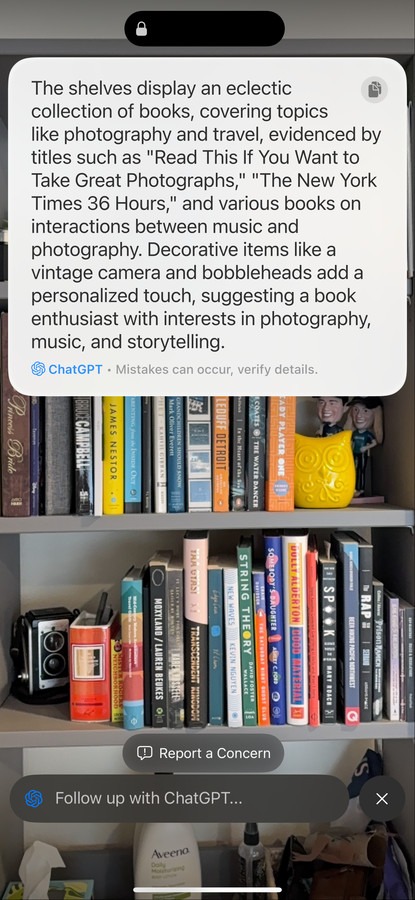Apple’s latest AI development, Apple Intelligence, is set for its official debut, yet it’s the upcoming enhancements to Siri that truly hold the potential for a transformative experience. As part of the iOS 18.2 update—currently available in beta for developers—Apple is bringing “Visual Intelligence” and a ChatGPT integration to Siri, aiming to make the virtual assistant more efficient and responsive.
One of the standout features in this new release is Siri’s capacity to delegate more sophisticated tasks to ChatGPT. For users with phones compatible with Apple Intelligence, Siri now moves beyond being a simple search tool, evolving into a more versatile assistant capable of leveraging ChatGPT’s database. Siri’s function as a “let me ChatGPT that for you” tool opens new avenues for advanced responses, offering benefits but also revealing limitations.
Initially, Siri seeks user consent before forwarding a question to ChatGPT, a setting that prioritizes user control. However, after testing this feature, many users may find that they prefer quicker responses and choose to disable the confirmation step. Siri still manages basic queries without ChatGPT and only hands off questions it deems complex, such as seeking cocktail recipes or troubleshooting specific home repairs. In these cases, ChatGPT provides responses beyond what Siri alone could offer, offering detailed answers or recommendations that previously required a manual search.


While the integration with ChatGPT allows Siri to handle more complicated questions, it also introduces familiar challenges associated with AI chatbots. ChatGPT, like similar models, has a known tendency to fabricate or misinterpret information on occasion. However, AI tools can be helpful for those seeking general advice or quick answers to new challenges, as long as they verify the information before fully trusting it. As a measure to reassure users, Apple has implemented privacy safeguards around its ChatGPT connection. OpenAI is bound by restrictions that prevent it from storing any Siri-requested data, meaning the user’s requests are processed solely to provide responses and are not retained or used to train the AI. Additionally, for those with an OpenAI account, the interactions are saved in ChatGPT history, but an account is not necessary for accessing the feature, allowing users to choose their level of interaction.
Another key addition in iOS 18.2 is “Visual Intelligence,” a feature that leverages ChatGPT’s capabilities for visual recognition tasks. By holding down the camera button, users activate a live camera view through which they can snap a photo and receive analysis or image search suggestions from ChatGPT or Google Image search. This functionality brings a feature similar to Google Lens directly into the Apple ecosystem, enabling users to identify objects, plants, landmarks, and even organize their surroundings based on photos. This feature has been well-received for its ease of use and helpfulness, as it offers suggestions that range from identifying various items in the home to generating cocktail recipes based on a photo of ingredients.
The responses provided by Visual Intelligence can be surprisingly detailed, though sometimes overly complimentary, as evidenced by how it described various home spaces with terms like “cozy” and “well-organized.” Yet, the AI’s practical uses are more noteworthy: it suggested potential repairs from a photo of a home maintenance issue, offering users a valuable resource to guide them in tasks they may not be familiar with. This AI-enabled tool is most effective when treated as a starting point, as it provides initial advice that users can then build upon with additional research or consultation.


Despite the potential of these new AI-powered Siri functions, there are also common AI pitfalls. Siri’s ChatGPT-based responses occasionally fabricate details, such as creating fictitious book titles or misunderstanding the humor in a comic strip. To address these types of inaccuracies, some users might appreciate a feature similar to Google’s Gemini chatbot, which cites sources in its responses, allowing users to verify the information. Currently, ChatGPT in Siri notes the number of sources it referenced, but these are often hidden behind additional clicks, which limits transparency. Improved citation accessibility could make this integration even more effective for those looking to cross-check answers quickly.
Beyond this latest release, Apple’s vision for Siri appears expansive. The enhancements to Siri in iOS 18.1 introduced a sleek, glowing interface and better language understanding, but these cosmetic and minor functional upgrades are dwarfed by what iOS 18.2 and beyond promise. Apple’s future updates are expected to introduce even deeper AI functionality, allowing Siri to directly execute actions within third-party apps—an evolution that could reshape mobile AI use by mid-2025. The goal is to transform Siri from a passive assistant to an active, app-integrated tool that could help users complete tasks without opening separate applications.
Among all these innovations, ChatGPT integration currently stands out as one of the most valuable aspects of Apple Intelligence, much like Google’s Gemini has made Google’s assistant more engaging. With each development, Apple’s approach to AI is enhancing Siri’s capability to deliver a more interactive experience. While ChatGPT is not flawless, it serves as an efficient tool that complements Siri’s standard functions, enabling Apple’s assistant to deliver smarter and more context-aware responses that were previously beyond its reach.
For iPhone 16 users and those with compatible devices, iOS 18.2 marks a significant step toward a future where AI plays an increasingly seamless role in everyday smartphone use. With these enhancements, Apple is setting Siri on a course to be a genuinely adaptive, AI-driven assistant that goes beyond the basics. This latest evolution may signal that the era of the truly intelligent personal assistant is approaching, with Apple’s Siri positioned to redefine user expectations on what virtual assistants can achieve.
